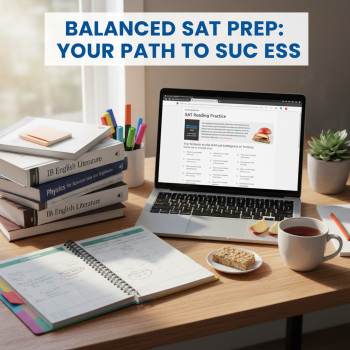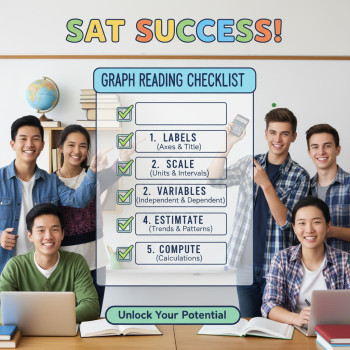Why planning extracurriculars around SAT dates matters
College applications are a juggling act: grades, essays, recommendation letters, and yes—extracurricular activities that show who you are beyond the transcript. Add the Digital SAT and its hard registration deadlines to the mix, and it can feel like you’re trying to choreograph a dance with moving parts. But here’s the reassuring truth: with a little structure and a realistic plan, you can keep thriving in leadership roles, sports, music, volunteer work, or internships while still showing up calm and ready on test day.
This article gives a practical, student-centered roadmap for aligning extracurricular commitments with key SAT milestones. You’ll get a timeline, decision frameworks, weekly schedules, a sample table for planning, and concrete examples for different student situations. I’ll also point out where tailored supports—like Sparkl’s personalized tutoring, 1-on-1 guidance, and AI-powered insights—can naturally fit in to reduce stress and boost efficiency.

Start with the calendar: map SAT dates and application deadlines first
Your planning always begins with concrete dates. The College Board publishes SAT test dates and registration deadlines each year; popular windows fall in spring and fall. Once you know the SAT dates you want to target, work backward to set prep milestones and to flag busy periods in your extracurricular schedule.
Why this matters: the hardest conflicts come when a big SAT date collides with a major extracurricular event—regionals, recitals, competitions, or travel. Seeing everything side-by-side turns surprises into solvable trade-offs.
Key timeline checkpoints to mark on a calendar
- Official SAT registration deadline (regular and late)
- Target practice test dates (diagnostic + two full practice tests before your official test)
- Major extracurricular events (tournaments, performances, deadlines for project submissions, leadership transitions)
- College application windows (early decision, early action, regular decision)
- School obligations (finals weeks, big project due dates)
Decide priorities: what to pause, what to maintain, what to intensify
Not every extracurricular needs the same level of commitment all year. Think of activities in three buckets:
- Essential and identity-defining — activities that define your application and personal identity (e.g., founder of a significant club, varsity team captain, long-term research). These you likely maintain with some adjustments.
- Opportunistic and seasonal — activities with specific windows (auditions, tournaments, trips). You may need to negotiate or shift commitments for test weeks.
- Supportive or low-impact — activities that are valuable but easier to pause briefly (weekly community service, casual club membership).
When SAT time approaches, focus on keeping the first bucket steady, trimming the third, and making smart choices around the second. That prioritization keeps your application narrative intact while freeing up the hours you need to prepare mentally and academically.
Build a practical calendar: an example 12-week plan
Here’s a sample 12-week plan for a student targeting a fall SAT date. Use this framework and tailor it to spring or other personalized test dates.
12-week structure (big picture)
- Weeks 12–9: Diagnostic work and content review—focus on weakest sections.
- Weeks 8–5: Targeted practice—timed sections, strategy work, pacing.
- Weeks 4–2: Full-length practice tests every 7–10 days; work on stamina and error review.
- Week 1: Light practice, logistics check, mental preparation—no cramming.
Weekly microstructure
- 3 focused SAT sessions per week (60–90 minutes) that include practice with immediate review.
- 1 full-length practice test every 10–14 days during the middle period.
- 2 short maintenance sessions (30 minutes) for vocabulary/problem-types or mental math warm-ups.
- One buffer day per week with no SAT work for rest or extracurricular demands.
How to coordinate common extracurricular scenarios
Different students have different rhythms. Below are common situations and practical trade-offs that work.
Student A: The athlete with weekend tournaments
- Flag tournament dates on your calendar and avoid scheduling practice tests on those weekends.
- Move intensive SAT study to weekday early mornings or late evenings when training isn’t as demanding.
- If a big tournament falls the weekend before your test, consider switching to an earlier or later SAT date to avoid fatigue and travel.
- Ask your coach for a light week 1–2 before the SAT if possible—many coaches will accommodate if you explain college test deadlines.
Student B: The musician or performer with recitals
- Avoid scheduling full-length practice tests within 48 hours of a major performance.
- Use music rehearsal time as a break from math or reading practice—mental contrast helps learning.
- Consider focused, short SAT practice sessions on commute or warm-up times (20–30 minutes) to keep progress without adding fatigue.
Student C: The leader balancing internship and school responsibilities
- Block recurring calendar times for SAT work and treat them like meetings—no cancellations unless for a major emergency.
- Use project milestones at the internship as incentives (e.g., complete a practice test after finishing a big report).
- Communicate with your internship supervisor or club advisors early about test dates to request micro-adjustments, like shifting a meeting by an hour.
Sample planning table: compare options and make choices
Use a simple table like this to compare SAT dates and how they interact with your extracurricular calendar. Fill in your own dates and events.
| SAT Date | Registration Deadline | Major Extracurricular Conflicts | Pros | Cons | Decision |
|---|---|---|---|---|---|
| Oct 4 | Sept 19 | State championship Oct 2–3 (travel) | Early attempt before early apps; more time to retake | High chance of travel fatigue | Choose alternate date or request to sit for Oct 4 only if local |
| Nov 8 | Oct 24 | Weekly orchestra rehearsal (evenings) | More prep time; avoids travel conflict | Closer to school finals | Keep Nov 8, reduce rehearsal intensity the last week |
| Dec 6 | Nov 21 | College application deadlines approaching | Last test before many college deadlines | Stress from applications + finals | Use only if earlier scores aren’t strong enough |
Daily and weekly routines that actually work
Routines don’t need to be rigid—but they do need to be repeatable. The trick is micro-habits: small, consistent actions that add up.
Sample weekday template
- Morning (30–45 minutes): Quick content warm-up (grammar drills or algebra practice)
- After school (60–90 minutes): Main SAT session—timed sections, practice problems, review errors.
- Evening (20–30 minutes): Light reading or vocabulary review; decompress with extracurricular practice (instrument scales, conditioning)
Sample weekend template
- One full-length practice test every 7–10 days during peak prep weeks (take in test-like conditions).
- Make Sunday afternoons for error review and a short plan for the upcoming week.
- Reserve recovery time—sports, socializing, or family—so you don’t burn out.
How to get the most from practice tests without killing your schedule
Full-length practice tests are non-negotiable—they simulate timing, build stamina, and reveal patterns of mistakes. But you don’t need to do them every week. Space them out and couple each test with an efficient error review.
- Take an initial diagnostic to identify weaknesses, then schedule a follow-up full test about 2–4 weeks later to gauge progress.
- Right after a practice test, spend the next session only on reviewing mistakes—understand why you missed questions, then do 10–20 targeted practice problems in those areas.
- If a tournament or performance is the same weekend as a scheduled practice test, reschedule the mock test to an earlier slot that week rather than skipping it entirely.
Communication is power: talking to coaches, teachers, and parents
Once you’ve mapped dates, clear communication makes adjustments possible. Coaches and directors are used to students balancing college timelines; teachers often appreciate advance notice when students are juggling test days and big extracurricular commitments.
Tips for productive conversations:
- Be proactive: tell people about your SAT date at least 3–4 weeks in advance when possible.
- Propose solutions: offer to swap a rehearsal slot, make up a practice, or cover certain responsibilities before test day.
- Use the calendar: share a one-page plan that shows where you’ll be and where you’ll need help.
The role of personalized tutoring—when and why it helps
Sometimes self-study is enough. Other times, strategic, individualized support fast-tracks improvement without eating more hours. That’s where personalized tutoring fits in naturally.
Benefits of 1-on-1, tailored tutoring:
- Targeted work on your exact weaknesses instead of generic practice.
- Efficient session planning so you use limited study windows before a big extracurricular event.
- Accountability and feedback that keeps momentum without adding stress.
For example, Sparkl’s personalized tutoring offers 1-on-1 guidance, tailored study plans, expert tutors, and AI-driven insights that help pinpoint the most impactful practice in short blocks—perfect for student-athletes or performers who can only study in smaller windows. When integrated into a calendar plan, a few high-quality tutoring sessions a week can outperform many hours of unfocused study.
Stress-management and test-week tactics
Test week is less about technical skill and more about management: sleep, nutrition, logistics, and mindset. If you’ve coordinated extracurriculars well, your biggest task is keeping those basics solid.
Two-week checklist before test day
- Confirm test registration and admission details; download or print any required materials for the Digital SAT platform.
- Identify a rest day after any big extracurricular event, especially if travel is involved.
- Cut down intense new extracurricular responsibilities in the last 7–10 days—this is not the time to start a new leadership project.
- Maintain consistent sleep schedule—aim for 8–9 hours the week before the test.
- Do light, focused practice only; avoid cramming that will increase anxiety.
Test day strategies
- Keep your morning routine familiar—this stabilizes nerves.
- Eat a balanced breakfast with protein and complex carbs.
- Use short breathing exercises to steady nerves before the test starts.
- After the test, plan a short recovery: a favorite meal, light activity, or a relaxed rehearsal—something that signals you’re done for the day.
Real-world examples: trade-offs that worked
Example 1: Mia, debate captain and pianist. Mia had a regional piano competition two days before a November SAT. She rescheduled her full-length mock test to the weekend prior, switched two intensive tutor sessions to 30-minute targeted reviews, and requested a lighter rehearsal week from her piano teacher. On test day she felt rested and focused—her score improved from practice by a meaningful margin.
Example 2: Jordan, varsity soccer and intern. Jordan’s team had a fall training camp that overlapped with his planned October SAT. He moved his official test to a later date after consulting his coach, used Sparkl’s short, targeted tutoring sessions to keep progress while traveling, and kept his internship hours steady by committing to two extra weekend hours before the test period. The coordinated approach preserved his team role and improved his test readiness.
Checklist: a one-page plan you can fill out today
- Pick your target SAT date and mark registration and late registration deadlines.
- List major extracurricular events in the six weeks before and after the test.
- Decide which activities you can scale back and which must remain.
- Block study sessions on your calendar and treat them like non-negotiable appointments.
- Schedule at least two full-length practice tests with review windows.
- Book any tutoring sessions you plan to use—short, focused meetings are often best leading up to competitions or performances.
- Plan two recovery days: one immediately before and one immediately after the test (light activity only).

Final thoughts: coordination is a skill that shows maturity
Balancing extracurriculars and SAT deadlines isn’t about giving up the activities you love; it’s about showing colleges—and yourself—that you can manage priorities thoughtfully. Admissions officers notice consistent leadership and authenticity, not last-minute frantic polishing. By planning ahead, communicating clearly, and using smart, focused supports when needed (such as 1-on-1 tutoring and AI-driven study plans), you keep both performance and preparation strong.
If you take away one thing, let it be this: small planning steps today prevent big crises tomorrow. A clear calendar, honest prioritization, and a few targeted study sessions will protect the parts of your life that matter most—your passions and your future.
Want a quick starter plan?
Fill out a single page with your target SAT date, three biggest extracurricular dates around that window, and three study commitments you can realistically keep for the next 8–12 weeks. If you’d like help turning that page into a weekly roadmap, personalized tutoring (like Sparkl’s tailored plans and expert tutors) can transform available time into measurable improvement without overwhelming your schedule.
Parting encouragement for students and parents
This process can feel heavy, but remember: coordination is a team sport. Parents, coaches, and teachers usually want students to succeed—ask for the small concessions that make a big difference. Students, you’re not giving anything up forever when you scale back temporarily. You’re making a strategic choice that preserves both your passions and your options.
Plan smart, communicate early, protect sleep and recovery, and use targeted support to amplify progress. You’ll walk into test day confident, prepared, and ready to show colleges the full picture of who you are.















No Comments
Leave a comment Cancel